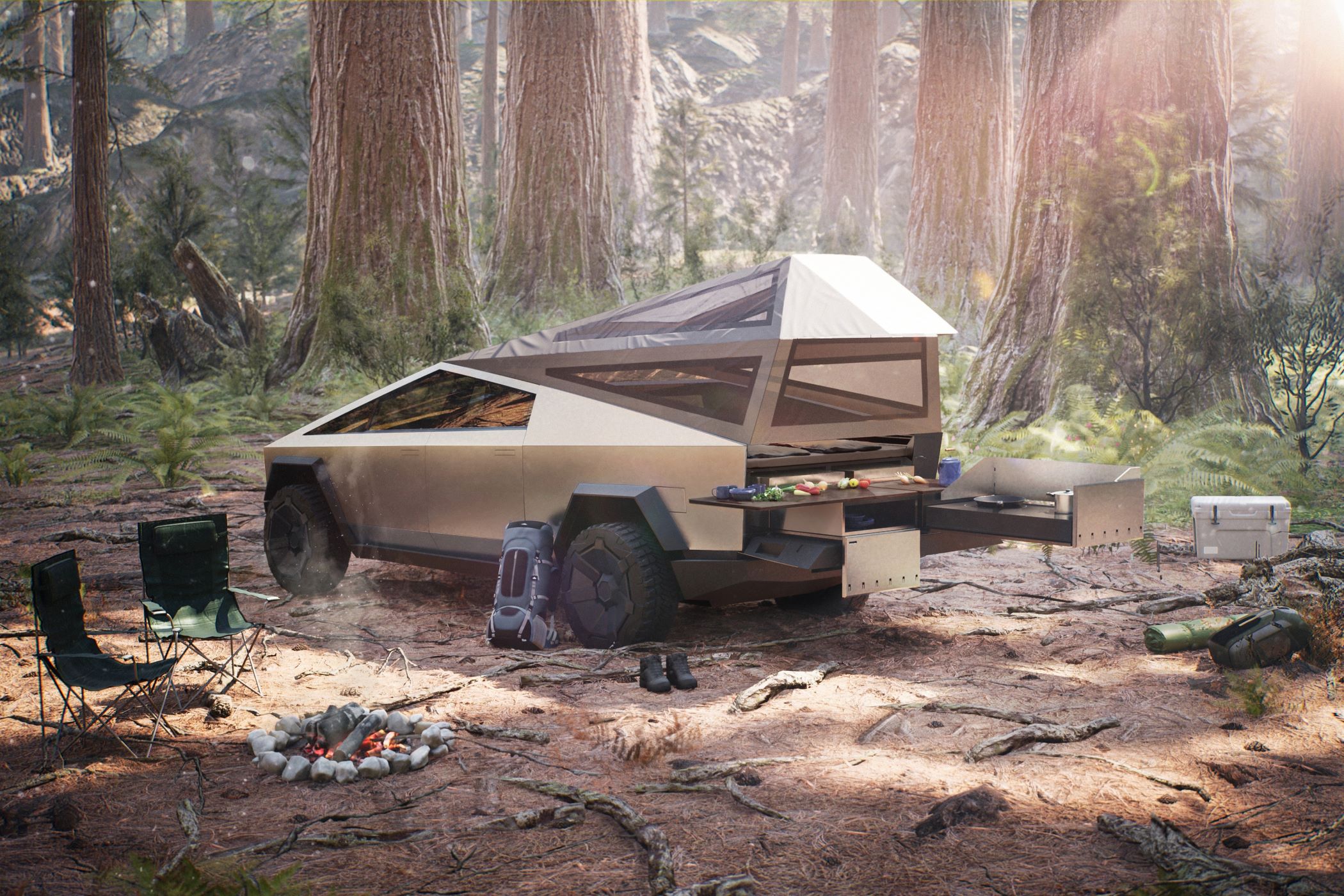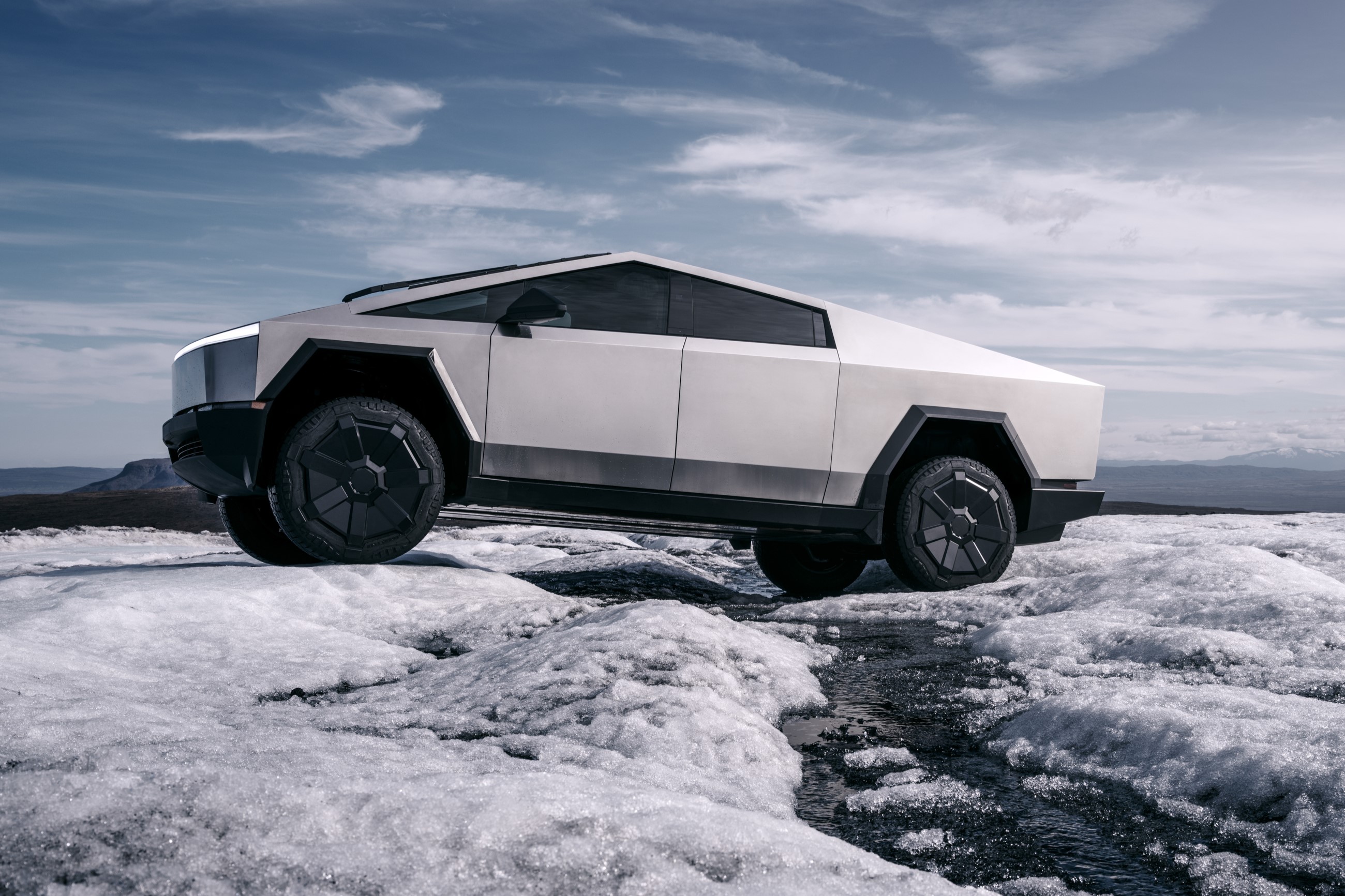
The Tesla Cybertruck hasn’t exactly worked out, and the controversial vehicle’s $3000 “Basecamp” tent accessory seems to be the latest letdown for the vehicle’s early adopters. Early renders showed a futuristic covering that would transform the truck’s bed into a glamorous camping space. Unfortunately, that isn’t what customers seem to be receiving.
Instead, Cybertruck owners who stumped up the extra $3,000 seem to be receiving a slightly cheap-looking, windowless, polyester tent with an interior akin to one of those bags delivery drivers keep pizza warm in. Looks can be a little deceiving here, as the materials used are allegedly of good quality. Despite this, it is still a far cry from what was promised — like many other elements of Elon Musk’s electric truck. Plus, there could be some quality control issues with the tent’s assembly, as the stitching on one of the nylon webbing straps appears to be coming apart after just one setup.
Installation also seems to be a problem. The rooftop tent was billed as something easy to install. According to a poster on the Cybertruck Owners Forum, the initial installation has to be performed by staff at a Tesla service center, and subsequent setups are not “significantly easier than setting up a standard tent on the ground.” One issue is the Basecamp’s weight, which may make it unwieldy and challenging for some people to get into place. There’s also an opportunity to lose a couple of bolts during a tricky part of the setup, which customers are expected to manage by feeling alone.
Amazingly, some built-in features are also missing. According to the poster, the truck should have a special “tent mode,” which uses the truck’s suspension to level out the back end if you’re parked on uneven ground and primes the built-in power outlets for any camping accessories you have. This is different from the available “camping mode.” Unfortunately, this feature has yet to be implemented.
This is the latest in a long line of Cybertruck disappointments
Pre-launch, you would think the Cybertruck’s appearance would be its only controversy. Despite looking like a low-polygon render of a moon buggy, the vehicle was meant to outpace sports cars, tackle any terrain up to and including lakes, and be built with micron-level precision.
Right off the bat, the truck was more expensive than originally billed and had a greatly reduced range. There was also a little sleight of hand during the launch event when lead designer Franz von Holzhausen bounced a baseball off the truck’s window. The original incident involved a steel ball shattering the pane, so we can assume that hasn’t been fixed.
Since its release, owners have reported that it’s absolutely awful offroad and even struggles in a few inches of snow. The “stainless steel” body panels have shown evidence of staining and corrosion. As with many Teslas, those panels are also poorly fitted, with uneven panel gaps and other quality control issues present. All in all, Tesla’s tragic tent is just another letdown in a long line of Cybertruck disappointments.




